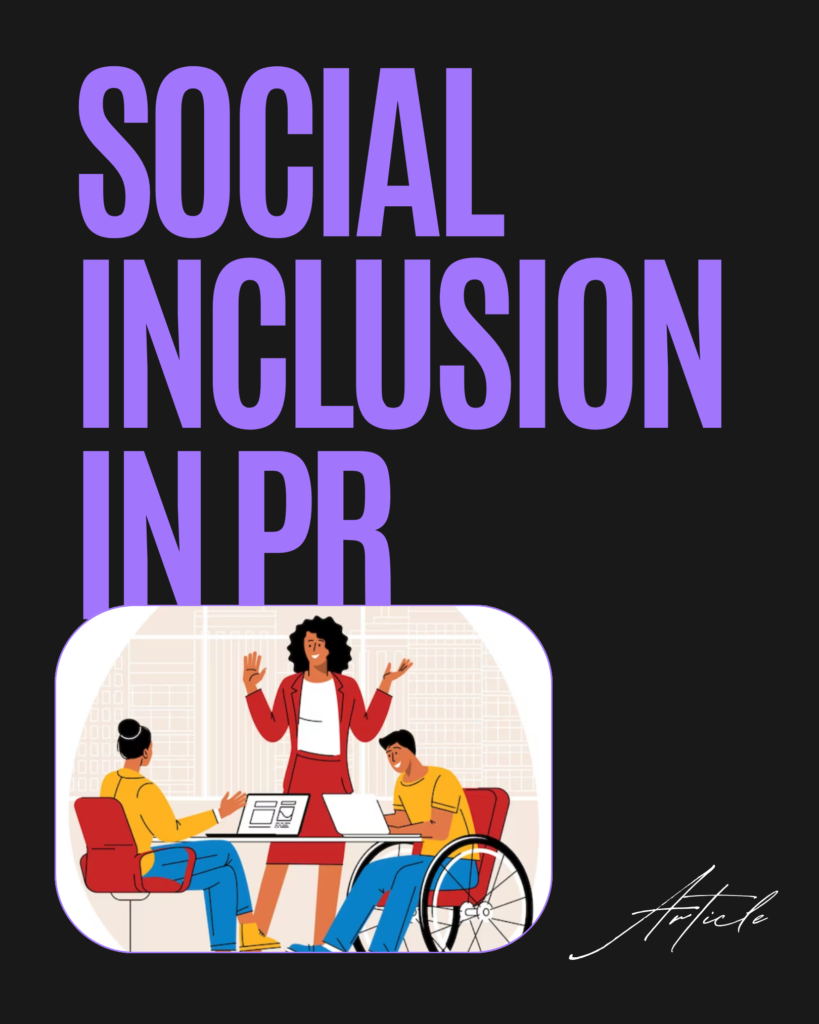
Social inclusion in public relations (PR) refers to the practice of ensuring that communication efforts are designed to embrace and involve diverse audiences, fostering a sense of belonging and representation for all members of society. Social inclusion in PR goes beyond simply reaching a wide audience; it emphasizes connecting with different demographic groups and creating a dialogue that respects and values their perspectives.
Diversity and Representation:
- Ensure that PR campaigns reflect the diversity of the target audience and society at large.
- Use inclusive language and visuals that represent various ethnicities, cultures, genders, abilities, and other demographic factors.
Cultural Competence:
- PR professionals should be culturally competent, understanding the nuances and sensitivities of different cultural groups.
- Avoid stereotypes and assumptions that can alienate or marginalize certain communities.
Accessibility:
- Make information accessible to people with disabilities. This includes using accessible formats for online content and ensuring physical events are wheelchair accessible.
- Consider the needs of individuals with diverse abilities when designing campaigns and materials.
Engagement with Marginalized Communities:
- Actively seek input and involvement from marginalised communities in PR planning and decision-making processes.
- Tailor messages to address the unique concerns and interests of different groups.
Community Outreach:
- Engage in community outreach initiatives to build relationships with a wide range of stakeholders.
- Collaborate with community leaders, organizations, and influencers to amplify messages within specific communities.
Educational Initiatives:
- Implement educational campaigns that raise awareness about social issues and promote understanding across different communities.
- Provide resources and information that empower individuals to be informed and active participants in society.
Feedback Mechanisms:
- Establish channels for feedback to ensure that PR efforts are responsive to the needs and concerns of various communities.
- Act on feedback to continuously improve inclusivity in communication strategies.
Corporate Social Responsibility (CSR):
- Integrate CSR initiatives that benefit marginalized communities and demonstrate a commitment to social responsibility.
- Communicate CSR efforts transparently to build trust with the public.
Inclusive Language and Tone:
- Use language and tone that resonate with diverse audiences.
- Avoid language that may be exclusionary or offensive to certain groups.
Monitoring and Evaluation:
- Regularly assess the impact of PR efforts on different demographic groups.
- Adjust strategies based on feedback and evaluation to improve inclusivity.

